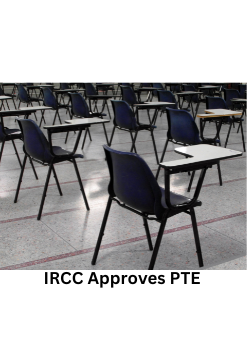If you are a doctor seeking to register and practice in primarily English-speaking countries, or for academic purposes, OET certification is an essential first step – it is a test that qualifies you as proficient in the English language for professional use.
Here at Hurray, we offer the best online OET coaching guaranteed to help you gain success in the exam! Individual-oriented and flexible, and bolstered by our 8 years of experience, you will find our OET online course to be well-suited to your needs – with the benefit of accessing it from wherever you are!
In this blog post, we will break down the OET writing test for you – along with a few tips and strategies suggested by our experienced and expert trainers, spearheading our OET online training programme.
*Update for Covid-19: For all of you staying home, we are here to assist you with your OET preparation during lockdown. All of our blog content can be used as frameworks guiding your practice and study efforts – so you can make the most of this time!
About the Writing Test
The test consists of a single task i.e. letter writing.
The test is designed to test the candidate’s ability to communicate via writing, drawing on actual professional circumstances.
The test is profession-specific – the candidate will be given a task specific to one of the 12 healthcare professions covered by OET, based on the understanding that each profession has specific communication requirements.
The category that you will select is Medicine. The most common letter type is the referral letter, followed by the discharge/transfer letter; others include letter informing a patient, carer or group, or a response letter to a complaint.
In addition to the letter prompt, the candidate is provided with supporting details in the form of case notes, and other relevant documentation.
Scoring & Criteria:
This is the most important aspect of Letter Writing. There are six new grading criteria in OET Writing. They are:
1) Purpose- The candidate must state the purpose of their letter and make it very clear at the very beginning. The purpose should always be included in the first paragraph of the letter. You must state as to why the letter was written, as well as include what action needs to be taken by the reader.
2) Content- Here you must include all the relevant and necessary information in an accurate manner. In this part of the letter you can score highly provided that you write the required length. The given length is between 180-200 words. The word count itself is a guide and will not be penalised for writing below the word limit or over it. The most important thing here is to include information that is relevant and necessary. The important thing is to make sure you include everything that is necessary. For this analyse your task properly.
3) Conciseness and Clarity- This is associated with the Content criterion, where you are given scores for including relevant information. For this criterion, you will be marked for any irrelevant information you include. You must remember that this has to be related to the purpose of your letter mentioned in paragraph one. If it is not coherent then this will make the purpose of your letter less clear.
4) Genre and Style- This criterion assesses what kind of language you have used to write your letter. Remember there are different types of letters that are written as times to medical professionals or non- medical professionals. You must write using a formal style, and your language should reflect the kind of audience to whom you are addressing the letter. Medical terms or certain technical abbreviations are appropriate for a medical professional. The same cannot be used when writing to a parent. Your writing should also be clinical, precise and non-judgemental.
5) Organisation and Layout - The organization of ideas is extremely important in letter writing. You must organize your letter properly. Use proper paragraphs to identify different points. The whole idea is that the information should be properly sorted so that retrieving the information will not be a problem.
6) Language - This means that all the linguistic features will be tested here. The focus is on aspects of vocabulary and grammar. Tenses, articles, prepositions, verbs, sentences, punctuation, vocabulary, etc. is graded under this criterion. The focus is on how you use these aspects to properly express your ideas and highlight the requirement of the task. The range of grammar used in the letter is not directly assessed, only the accuracy.
All of the criteria now have a maximum grade of 7, except for Purpose which will be graded out of 3.
Tips for Preparation
The key to good writing – whether in professional or other circumstances – is preparation! Read on for our tips on how to prepare yourself to ace OET writing.
-
Build Vocabulary and Grammar skills
Vocabulary skills involve knowing a large number of words, what they mean, spellings and appropriate use. Good grammar includes the correct use of functional aspects of language, such as verbs and tenses, punctuation, articles, pronouns and prepositions.
As a medical professional, your vocabulary must be strong on profession-specific and technical words – but for the purpose of professional communication, you must also have an excellent colloquial vocabulary and grammar skills…all to ensure that the essential message you have to communicate is understood perfectly by your reader!
The best way to build these skills is to read good material and watch/listen to informative programmes, where good English is bound to be used (you can trust magazines like Time or National Geographic and news channels like BBC).
-
Build a Repertoire…
…of words and phrases that you can incorporate in your writing. For instance,
-
In the introduction, based on the purpose of the letter:
“I am writing to refer…”
“This letter is in regards to the discharge/transfer…”
-
To ensure coherence and cohesion:
“In addition to” or “furthermore”, to indicate connection
“Thus”, “therefore”, “accordingly”, to indicate causality
“Differentiate” or “distinguish between”, to indicate difference
-
In the conclusion, involving a call to action:
“Based on the above, I recommend…”
“In light of this, I request…”
Tips for Task Performance
-
Managing Time and Word Limit
You will be given a time limit of 45 minutes to complete the task, and are expected to adhere to a word-limit of 180-200 words.
It is suggested that the first 5 minutes be used to prepare for the task, with the remaining 40 minutes reserved for writing.
We suggest the following tips to utilise the prep time well:
-
Read the prompt carefully to identify the purpose of the letter
-
Skim-read the case notes
-
Identify and make quick note of the information which is relevant, keeping in mind the purpose of the letter
-
Number your selected points, to form a particular order, which you will use to structure your letter
Remember that not all the information will be of use to a particular reader – choose your points carefully and with discretion. You will comfortably stay within the word and time limits, if you successfully select only the most relevant information.
-
Structure and Format
With regard to structure, we suggest the following:
-
Begin with a clear introduction, wherein the purpose of the letter is immediately apparent
-
Divide your letter into short, clear paragraphs – depending on the nature and amount of content
-
There must be a clear concluding paragraph, typically containing a call to action
OET does not specify any particular letter-format or template. The only stipulation is that the format utilised must be clear and well-structured, in accordance with the scoring parameters you read above. See our post OET Writing: Letter-writing for a sample structure we recommend. It is to be modified as per your requirements/the requirements of the organisation to which you belong/are seeking admission.
-
Language
-
While the information in the case-notes will be given in point-form, you are expected to write in full sentences
-
Any abbreviations or profession-specific vocabulary must be used, keeping in mind the target reader’s expected ability to understand
-
Use the repertoire of words you build to maintain a good flow
Tips
-
Understand the writing task.
-
Identify the type of letter
-
Understand the case notes.
-
Spend around 3-4 minutes carefully reading and understanding the case notes.
-
Select case notes.
-
Choose only relevant information.
-
Plan your writing structure.
-
Organise case notes
-
Transform the case notes into a letter of between 180-200 words.
-
Use abbreviations where required.
-
Use the correct format
-
Mention the name if given otherwise only mention designation
For more how-to’s like these, and plenty of opportunities to put them into practice, you can depend on our OET online classes.
To learn more, reach out to us via email: info@hurrayedutech.com or call us on 8971357938.











Post Comments